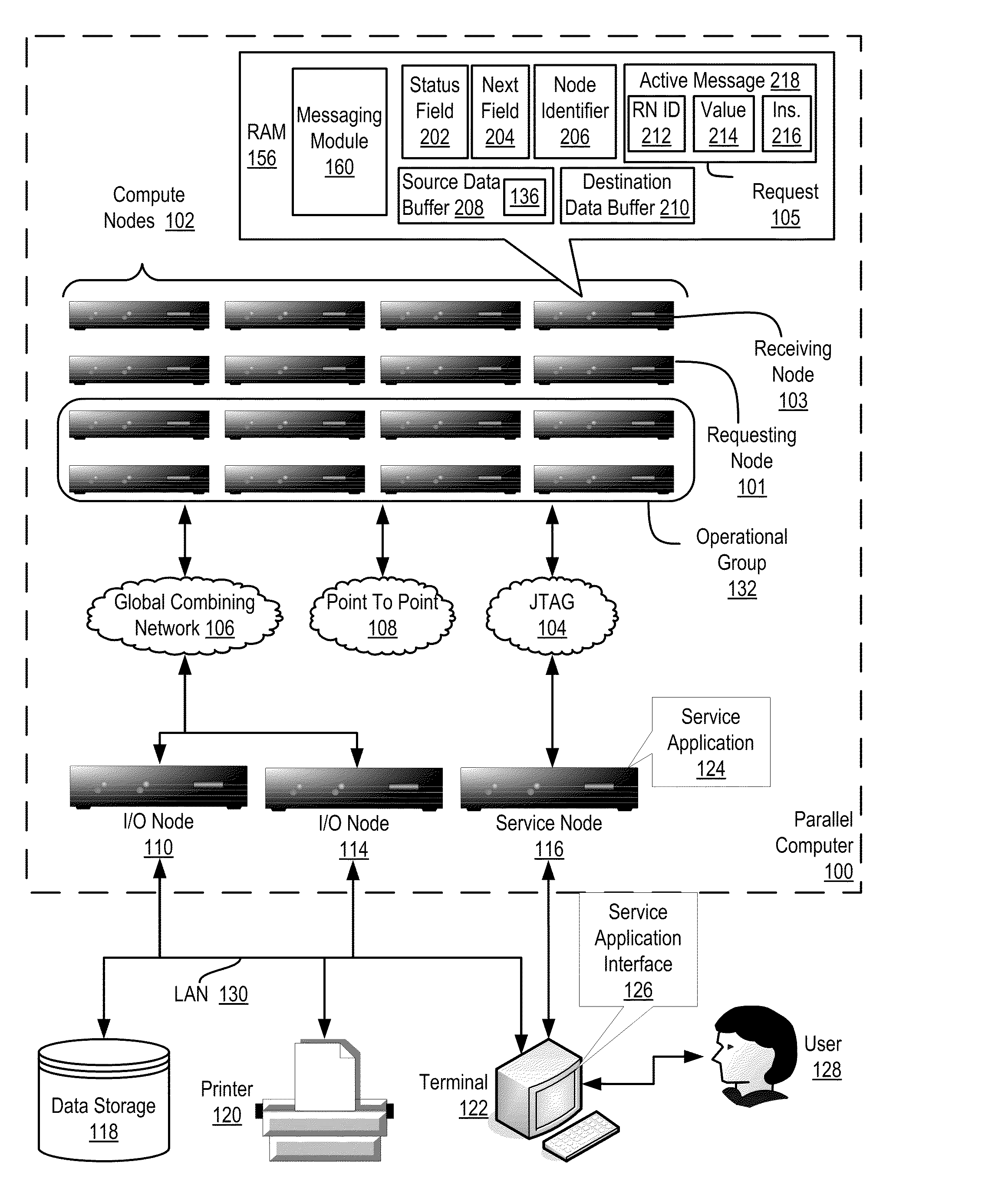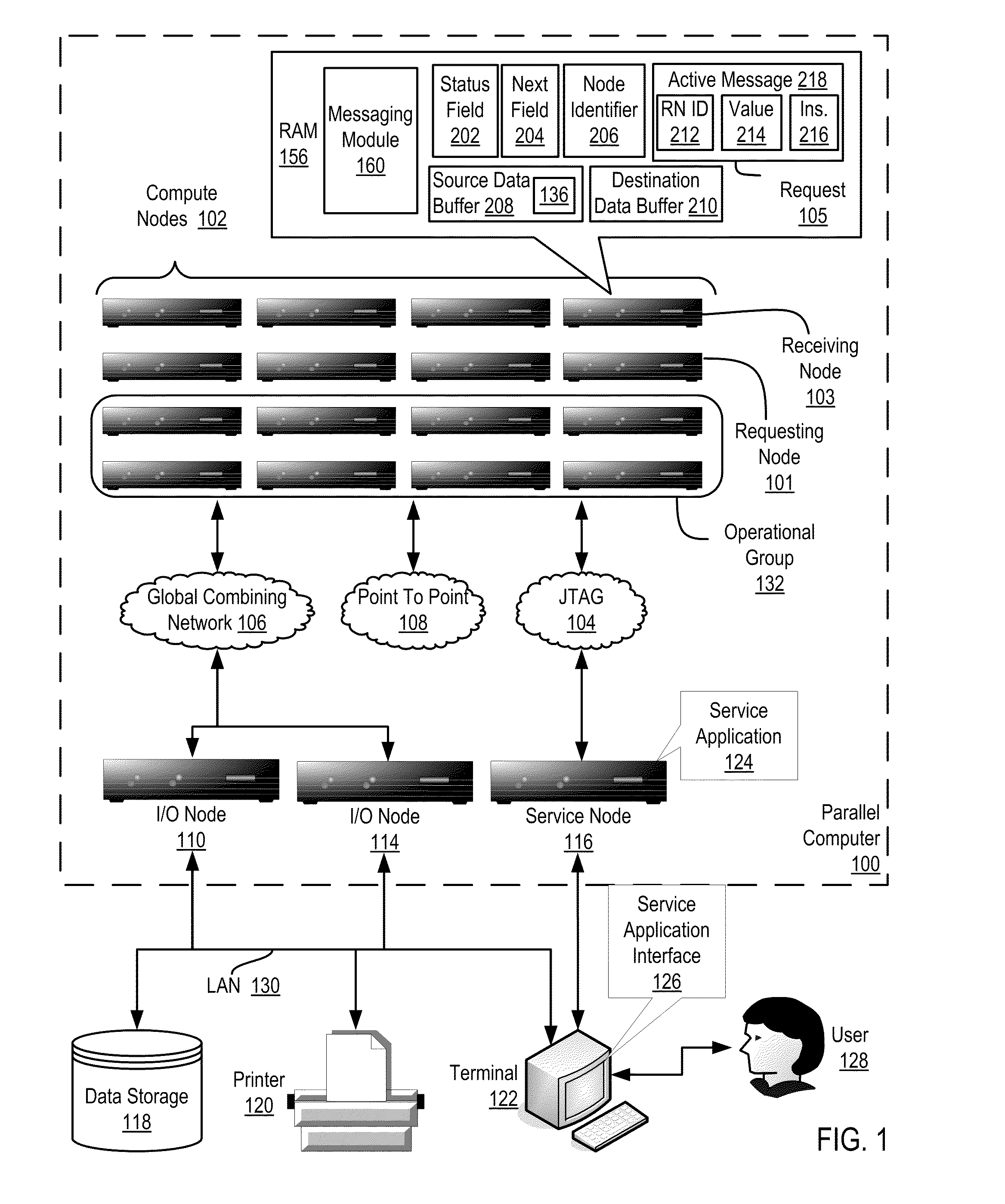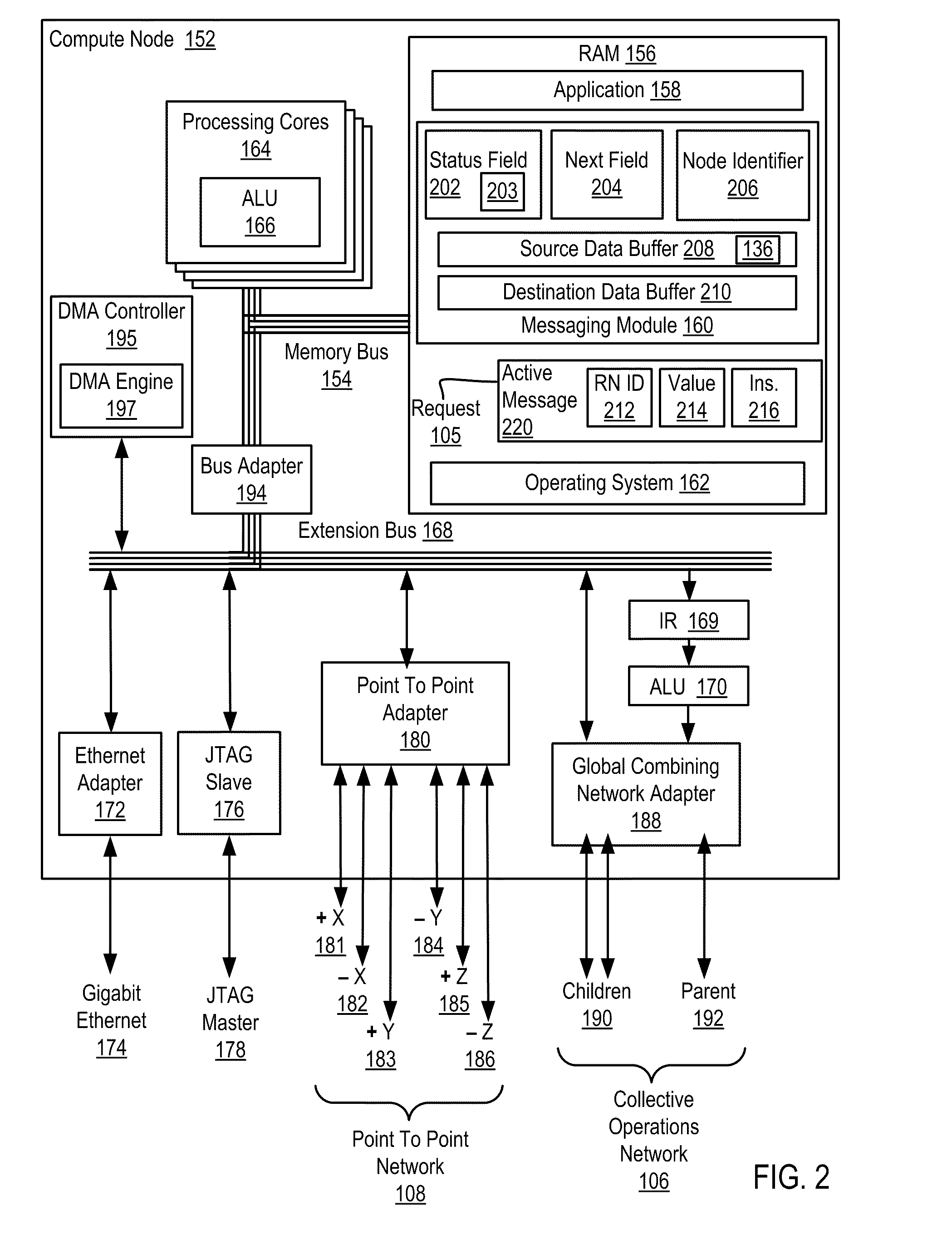Controlling Access To A Resource In A Distributed Computing System With A Distributed Access Request Queue
a distributed computing system and resource technology, applied in computing, digital computers, instruments, etc., can solve the problems of limiting the potential speed of serial processors, and affecting the performance of the computer system
- Summary
- Abstract
- Description
- Claims
- Application Information
AI Technical Summary
Benefits of technology
Problems solved by technology
Method used
Image
Examples
Embodiment Construction
[0029]Exemplary methods, apparatus, and products for controlling access to a resource in a distributed computing system in accordance with embodiments of the present invention are described with reference to the accompanying drawings, beginning with FIG. 1. FIG. 1 illustrates an exemplary distributed computing system for controlling access to a resource according to embodiments of the present invention. The system of FIG. 1 includes a parallel computer (100), non-volatile memory for the computer in the form of data storage device (118), an output device for the computer in the form of printer (120), and an input / output device for the computer in the form of computer terminal (122). Parallel computer (100) in the example of FIG. 1 includes a plurality of compute nodes (102).
[0030]The compute nodes (102) are coupled for data communications by several independent data communications networks including a Joint Test Action Group (‘JTAG’) network (104), a global combining network (106) wh...
PUM
 Login to View More
Login to View More Abstract
Description
Claims
Application Information
 Login to View More
Login to View More - R&D
- Intellectual Property
- Life Sciences
- Materials
- Tech Scout
- Unparalleled Data Quality
- Higher Quality Content
- 60% Fewer Hallucinations
Browse by: Latest US Patents, China's latest patents, Technical Efficacy Thesaurus, Application Domain, Technology Topic, Popular Technical Reports.
© 2025 PatSnap. All rights reserved.Legal|Privacy policy|Modern Slavery Act Transparency Statement|Sitemap|About US| Contact US: help@patsnap.com



